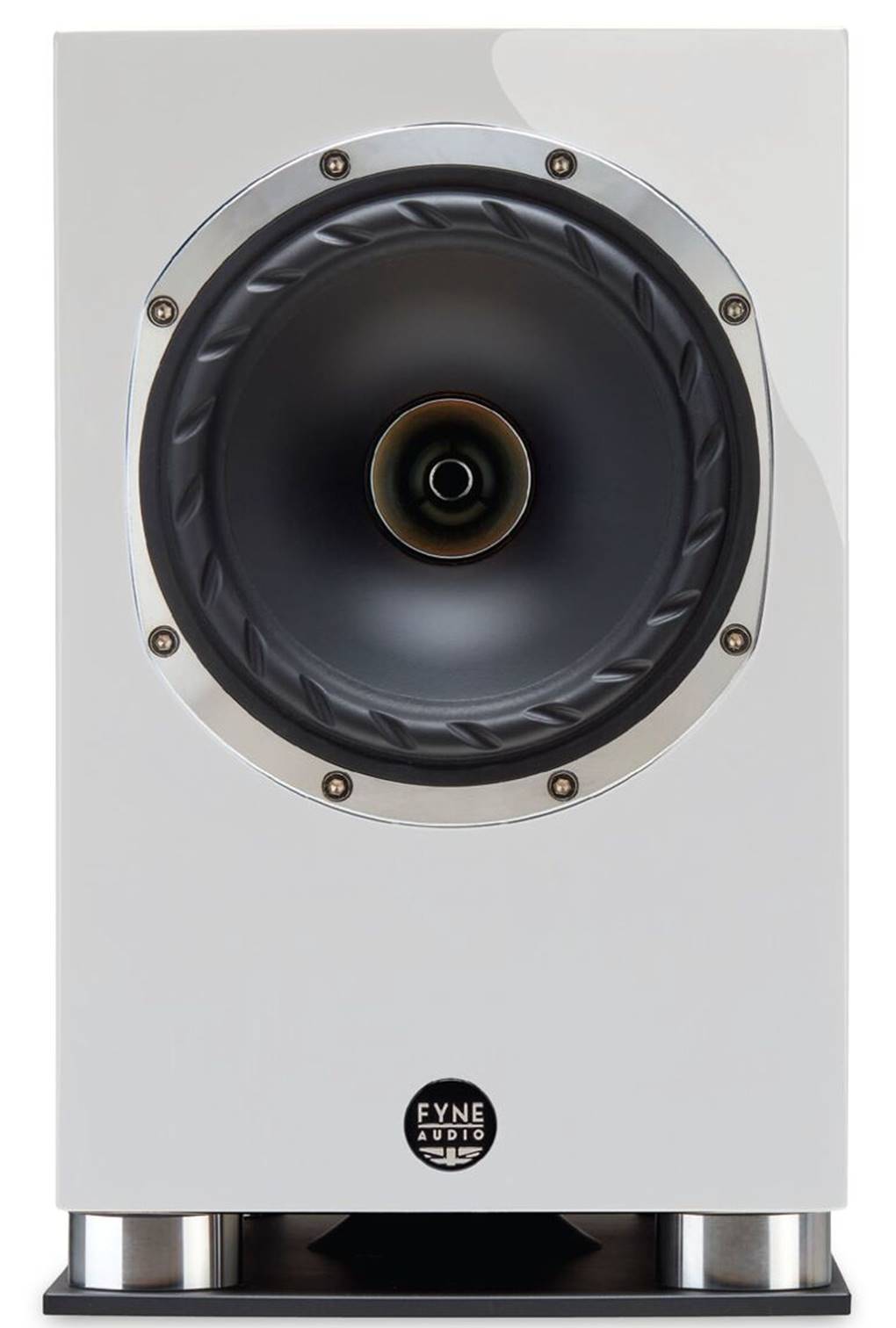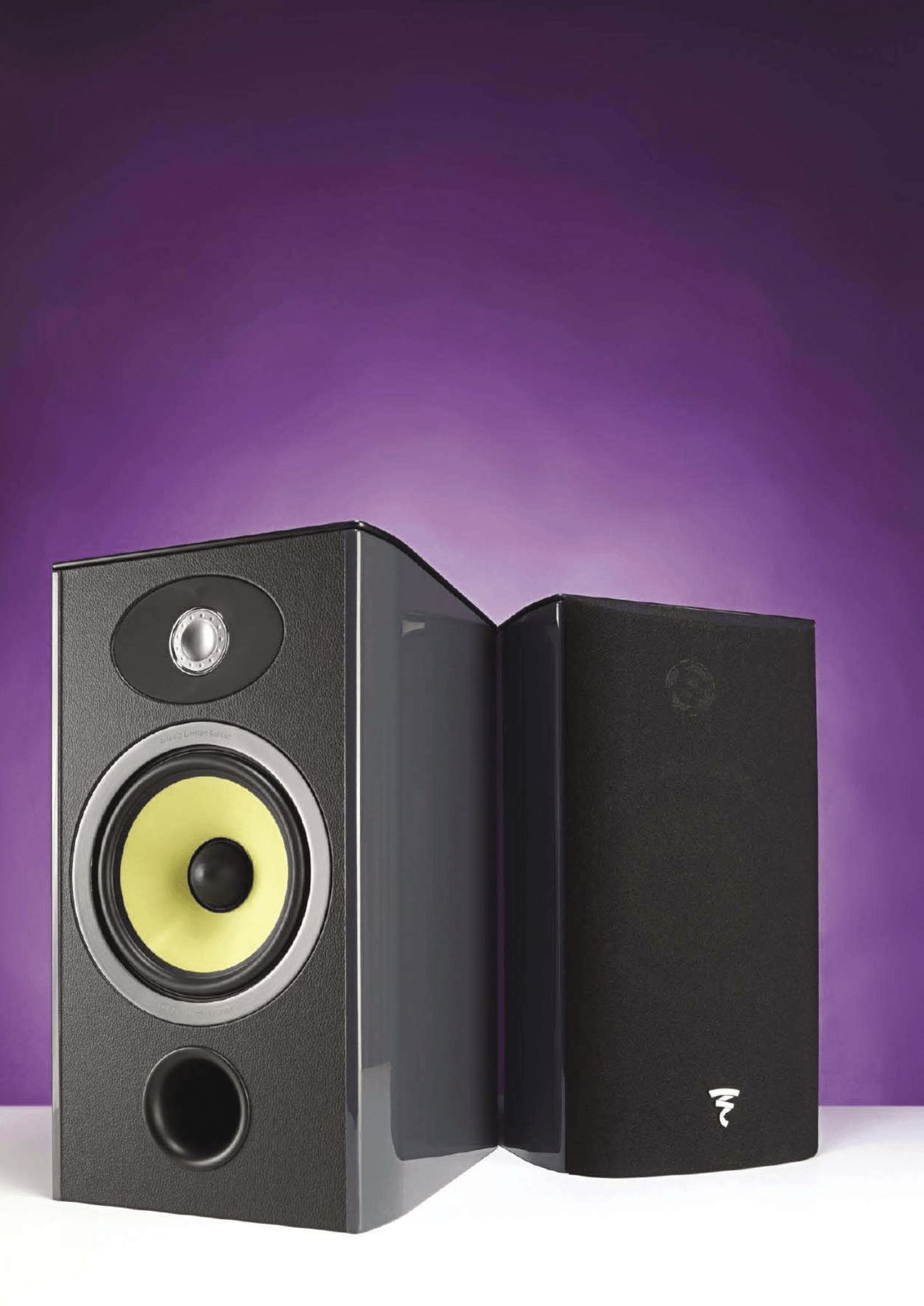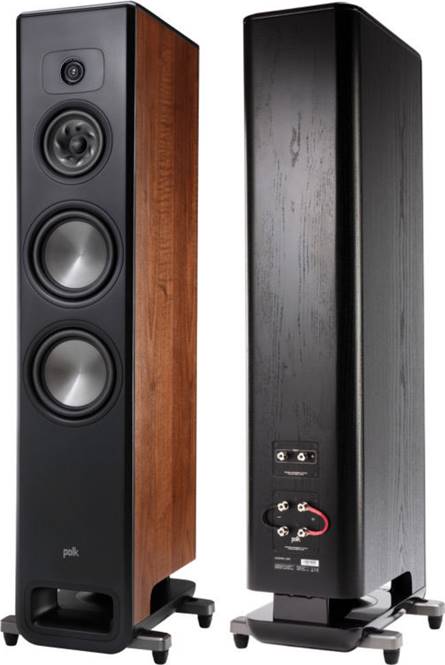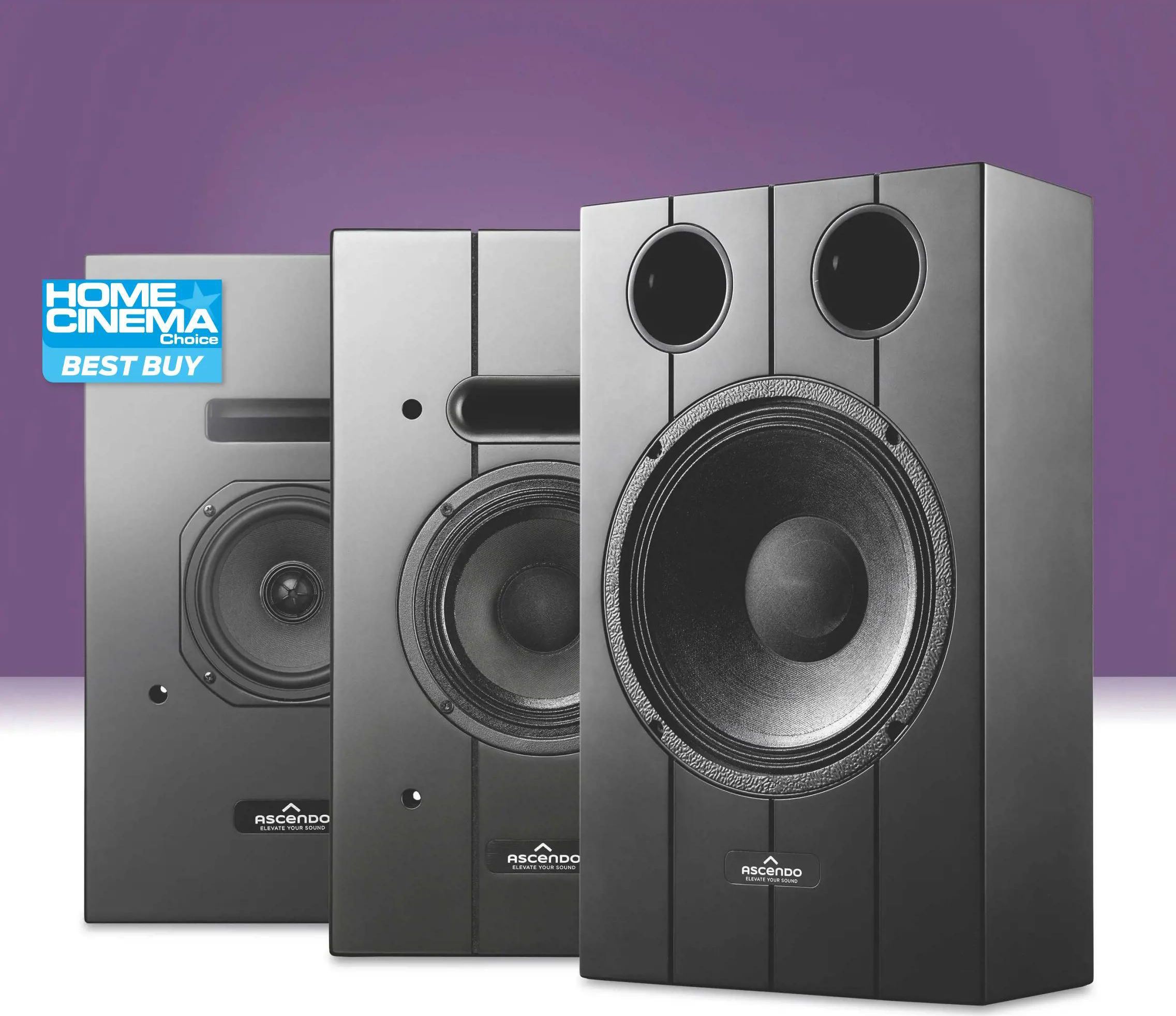In my April 2020 review of Fyne Audio’s inexpensive F301 standmount loudspeakers, I wrote, “The Fyne F301s impressed with their exceptional rendering of soundstage width and depth, reasonably wide dynamic range, extended low end (for their size), and exuberant, I-can’t-stop- spinning-records presentation. The Fynes presented a finely layered, spatially convincing soundstage with images that were solid, if small.”
KEN MICALLEF
Upon receiving Editor Jim Austin’s assignment to review the Fyne F301’s big brother, the F500SP, an upgraded version of the company’s F500 model, I wondered if listening would reveal a house sound. Fyne’s bookshelf speakers share a similar look, and similar parts and design. But, while the F301s cost just $/pair and the base-model F500s, $/pair, the F500SP will set you back $/pair in gloss black or white, $/pair in walnut. The F500SP’s dedicated FS6 stands add $/pair to the price.
Founded in 2017, Fyne Audio is the brainchild of several former Tannoy employees, including Dr. Paul Mills, the company’s technical director, who was formerly the engineering director at Tannoy; and Max Maud, Fyne’s sales and marketing director, who formerly served as Tannoy’s sales manager. “SP” designates Fyne’s “Special Production” speakers, which are made at Fyne’s Glasgow factory by the company’s “Special Projects” team, in contrast to the regular F300 and F500 lines, which are manufactured at Fyne Audio’s Asia facility. The SP line adds features found in the more expensive 700 line to the 300 and 500 speakers.
There’s a clear resemblance between some Fyne Audio speakers—including the F500SP—and some Tannoy speakers, the most obvious being the use of coaxial drivers, which Fyne Audio calls “IsoFlare.” “Fyne Audio’s IsoFlare driver is a point-source system whereby the bass/midrange driver shares a common center with the high frequency unit,” Max Maud explained in an email. “[E] nergy is radiated isotropically with constant directivity following the flare of the driver cone. Sound is produced emanating from a single point.” The F500SP utilizes a 6″ version.
The Fyne revealed Trane’s horn as the loudest thing in the mix; the Fyne seemed to capture the sound of his lips on the saxophone’s reed.
“Our IsoFlare point-source drivers are built around a custom-tooled, rigid, cast-aluminum chassis,” Maud continued. The high-frequency unit’s annular waveguide has “a computer-optimized expansion rate and geometry to provide flat frequency response and avoid internal reflections.”
SPECIFICATIONS
Description Two-way, bassreflex loudspeaker with coaxial tweeter/midbass driver and down-firing port with diffuser. Drive unit complement: 6″ (150mm) “IsoFlare” pointsource driver with multifiber bass/midrange cone with “FyneFlute” surround, 1″ (25mm) magnesium-dome compression tweeter with neodymium magnet system. Crossover frequency: 1.7kHz. Crossover type: Biwired, passive, low-loss, 2nd-order low-pass, 1st-order high-pass. Recommended amplifier power: 30-120W RMS. Continuous power handling: 60W RMS. Sensitivity: 90dB/2.83V/m. Nominal impedance: 8 ohms. Frequency response (-6dB in a typical room): 42Hz-34kHz.
Dimensions 12.7″ (323mm) Hx7.9″ (200mm) Wx 12.6″ (320mm) D. Weight: 17.61b (8.1kg).
Finishes Piano gloss black, piano gloss white, walnut.
Serial numbers of units reviewed F80000381210908100724A, F80000381210908100724B.
“Designed, engineered, and made in UK.”
Number of US dealers: 42. Warranty: 7 years.
Manufacturer Fyne Audio Ltd., Suite 42, Grovewood Business Centre, Strathclyde Business Park, Bellshill, Lanarkshire, ML4 3NQ, Scotland.
Email: [email protected].
Tel: 0141-428-4008.
Web: fyneaudio.com.
US distributor: The Sound Organisation, 1009 Oakmead Dr., Arlington, TX 76011.
Tel: (972) 234-0182.
Web: soundorg.com.
The Fyne website further elucidates the technology used in the 500SP: The 6″ cone is “multi-fibre”; its bass reproduction is said to be enhanced by a “twin-magnet motor system”—an additional magnet positioned behind the main magnet system “focuses otherwise stray magnetic flux into the voice coil gap to improve low frequency performance”—and a composite-rubber surround, which Fyne calls “FyneFlute.” This special surround is said to “reduce cone resonances at the driver termination.”
The F500SP is a bass-reflex design with a port that opens onto Fyne’s “BassTrax Tractrix diffuser system,” which is mounted to the plinth to which the speaker is attached by four aluminum feet. The BassTrax Tractrix system “converts plain wave port energy to a spherical 360-degree wave front, integrating energy uniformly into the room.”
At the center of the F500SP’s coaxial driver is a “highly rigid,” magnesium- diaphragm tweeter, which is energized by a neodymium high-frequency magnet. “The unique geometry of the high frequency unit’s waveguide provides a flat frequency response and avoids internal reflections,” Fyne says. That glossy waveguide is made of mild steel.
The tweeter’s rear chamber “is vented through the magnet system,” Maud explained. “This has foam damping to avoid reflections and lowers the resonant frequency for improved tweeter low-end performance.” The IsoFlare driver is produced by “specialist subcontractors to our design,” Maud said.

The F500SP’s crossover utilizes “low-loss, laminated core inductors and audiophile-grade polypropylene capacitors.” The F500SP provides two sets of inputs—it’s bi wirable—plus one unusual feature: a grounding terminal that allows you to ground the driver chassis to “eliminate amp or cable born[e] RF interference.” The only other loudspeaker brand I’m aware of that offers anything like this is Audiovector.2
The F500SP is a substantial-looking speaker, squat and hefty.
The speaker’s rear and front baffles are slightly rounded, which is said to improve the dispersion of the IsoFlare driver.
Max Maud told me the F500SP was voiced using a “CLIO measurement system and a wide range of partnering equipment in subjective evaluation.”
Setup
Fyne Audio says that the BassTrax Tractrix diffuser ensures that the loudspeaker is “less critical of room positioning.” Maybe so, but I found this speaker to be less forgiving than other small, ported speakers of near-wall placement. Siting them approximately 33″ from the front wall, 59″ apart, and 59″ from my listening seat gave the most spatially appealing sound with a deep soundstage, open treble, clear mids, and strong bass. I didn’t have the matching stands, so I placed the Fynes on a pair of 24″-high Sonus Audio speaker stands.
A 6′ pair of Auditorium 23 speaker cables connected the Fynes to the Ayre EX-8 2.0 integrated amplifier,3 which, according to JA’s measurements, should deliver a maximum of 107W into a nominal 8 ohm load. I also tried the Heed Audio Elixir, Parasound Hint 6 Halo, and Schiit Audio Ragnarok 2 integrated amplifiers.
For this review, I mostly listened to records with my Kuzma Stabi R turntable and Kuzma 4Point tonearm and the EMT TSD15 N Super Fineline moving coil cartridge. The output of that front-end was equalized and preamplified by a Tavish Audio Design Adagio phono preamp connected to those integrated amps via a 2m run of Triode Wire Labs Spirit II single-ended (RCA) cables.
Listening
I evaluated the F500SP with a variety of vinyl recordings, starting with a 1961 pressing of Hank Mobley’s hard bop blowout, Roll Call (Blue Note BLP 4058). I also explored Nils Frahm’s cerebral, treated-piano journey, Felt (Erased Tapes Records ERATP033LP), the 25th Anniversary remastered edition of Buena Vista Social Club (BMG WCV05025), John Coltrane’s Ballads (Impulse! AS-32), Eddie “Lockjaw” Davis’s 1958 mono kicker, The Cookbook (Prestige 7141), the 2020 reissue of Tom Petty’s 1994 album Wildflowers and All the Rest (Warner Records 093624892991), and Symphonic Concertante Pour Violon, Alto Et Orchestre En Mi Bemol Majeur KV364 / Concertone Pour Deux Violons Et Orchestre En Ut Majeur KV190 with Jean-Francois Paillard and the Orchestre J.-F. Paillard (Denon OX-7022-ND).
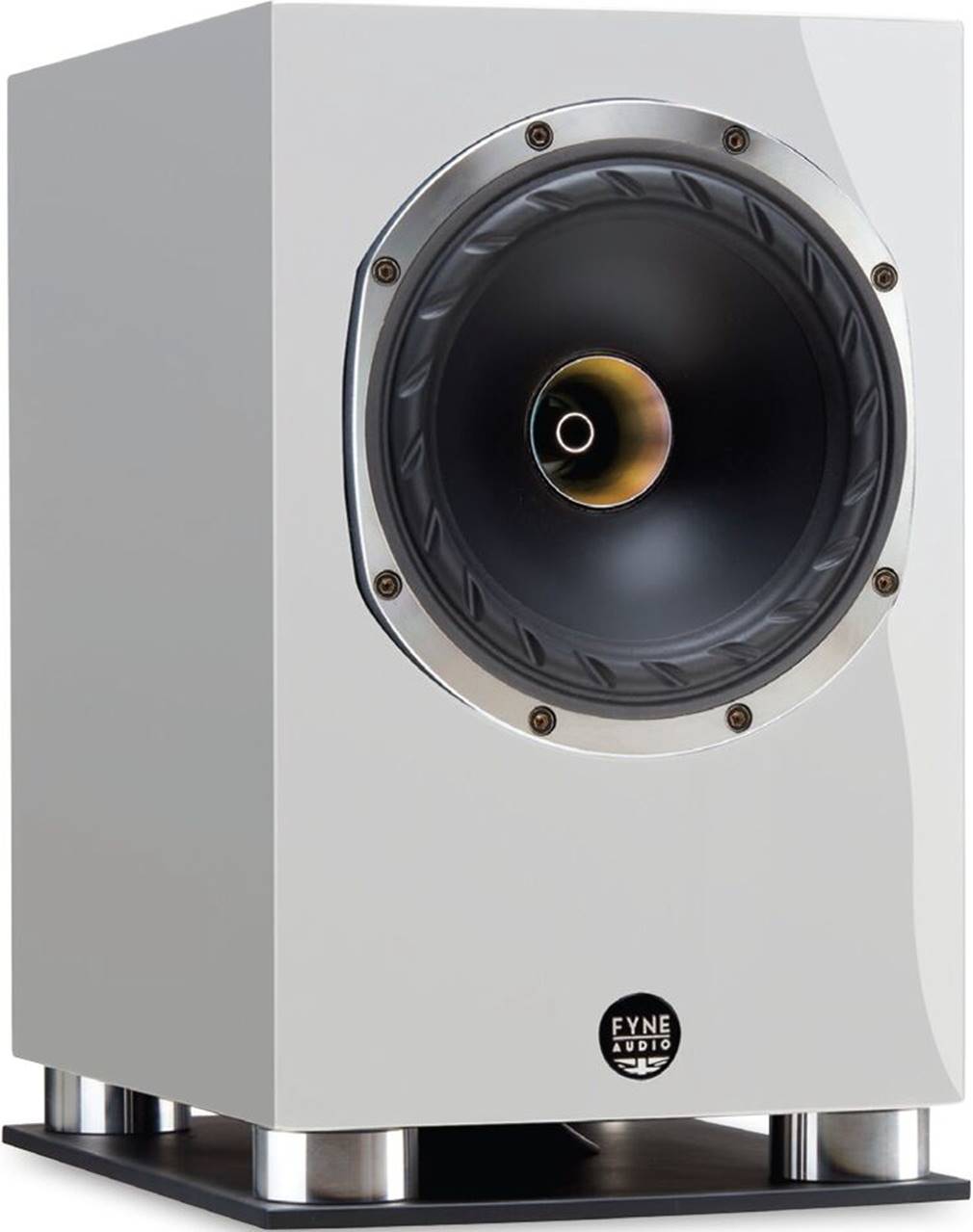
The F500SP is not a forgiving speaker like my Spendor BC1, which sounds great with any moderately powerful amplifier. Nor is it naturally warm and lush like my DeVore Fidelity Orangutan 0/96. The F500SP is precise but not analytical, resolving but not surgical, clean but not sterile. It extracted abundant detail from old recordings and made contemporary records sound full bodied, dense, deep, and quick.
The F500SPs seem to be low in distortion, which allows them to place each record in its unique place in time. 1950s mono jazz records cut at Rudy Van Gelder’s Englewood Cliffs studio sounded zippy and energetic. 1990s electronic dance records pounded and pulsed, their spectral synths and robot drum machines sounding creamy and enveloping—almost feline. Modern rock records had plenty of bite and drive, with crisp snares and guitars, palpable vocals, and well-imaged, well-defined electric bass guitar. Reproduced by the F500SPs, music sounded meaty, visceral, and full bodied and proved capable of spinning a deep, wide soundstage with clear spatial relationships among instruments. It portrayed music with gobs of air and space when those qualities were on the recording, as on Frahm’s Felt.
The F500SP reproduced bass instruments in convincing fashion; upright and electric bass, timpani, bass drums, low organ notes, viola, cello, and the like came across with coherent, leading-edge exactness, with no overhang or bass bloat. Some small speakers present a soft and spongy impression of bass. The Fynes produced actual notes down there: a taut, coherent bass message, though without as much weight as larger speakers (with larger woofers) can convey.
The F500SPs were texture kings. They captured the sound of a wire brush circling a plastic drumhead; of air rushing through a metal saxophone; of the resounding rasp of a vibraslap; of the bristling character that distinguishes a Fender Telecaster from a Stratocaster.
Parasound’s Hint 6 Halo extracted clarity from the F500SP, but the combination produced glare that left my ears ringing. The Hungarian Heed Audio Elixir proved a warmer and more liquid match, fleshing out the speaker’s low end and producing a more balanced tonal palette. The Schiit Audio Ragnarok 2 made the best match yet to the F500SP, with hot- shot dynamics, density, good tone, and soundstage depth; the Ragnarok 2 added a visceral quality that made the music more involving, especially on a first pressing of Horace Silver’s The Cape Verdean Blues (Blue Note 4220).
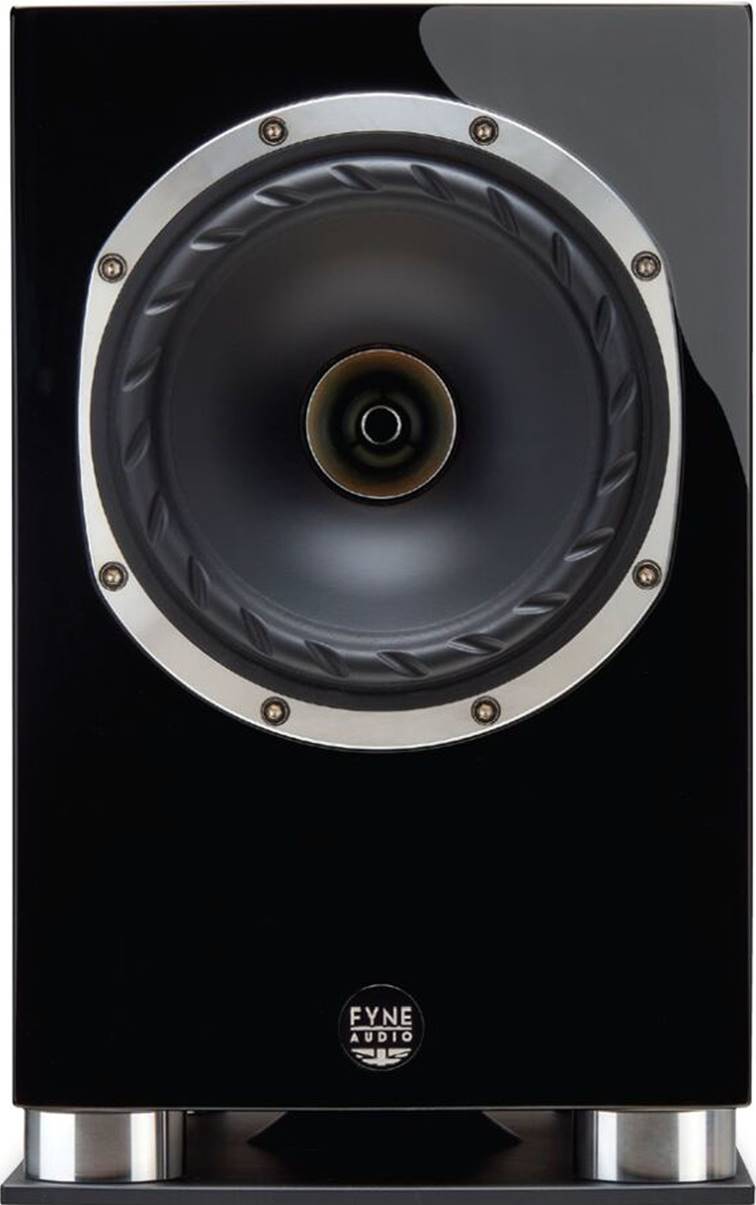
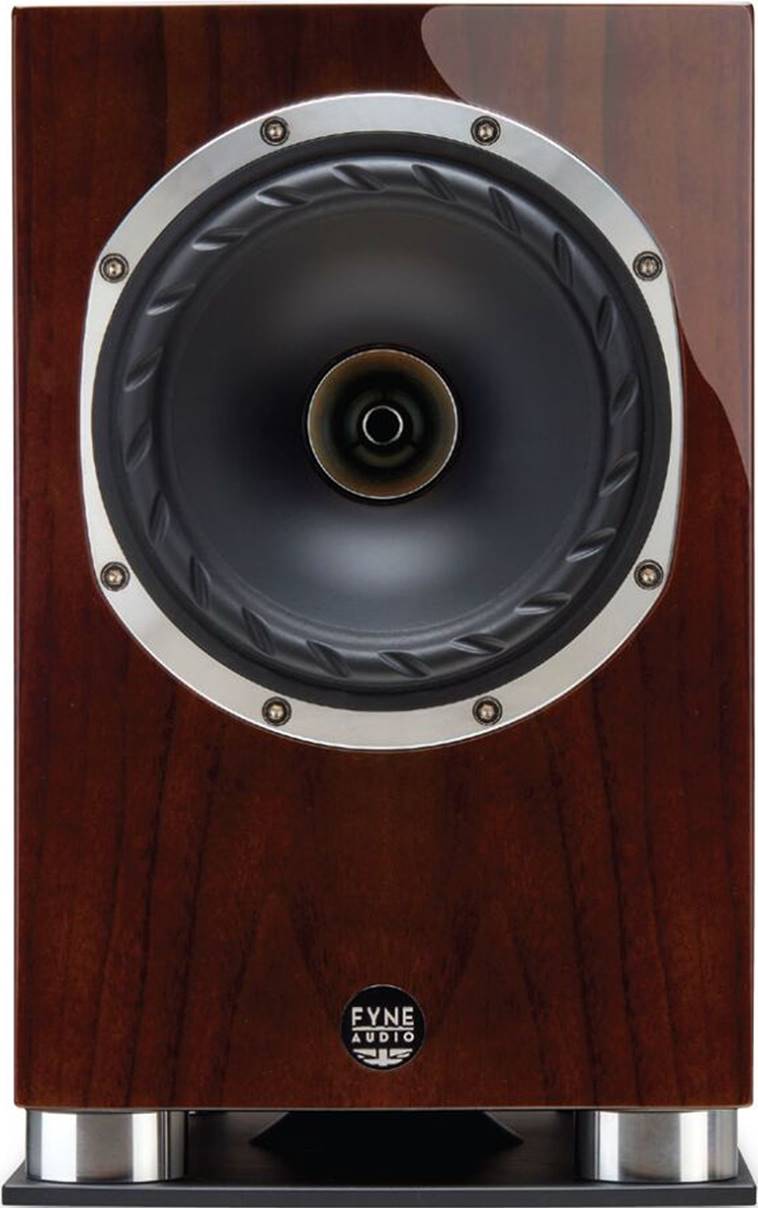
When I inserted the Ayre EX-8 2.0 into the chain, the Fynes cut loose and started singing. Bass became bigger and deeper, soundstage depth and bloom increased. Records sounded smoother and creamier as though a layer of grit had been removed. The Ayre stayed in my system for the remainder of the review.
John Coltrane’s tenor sax on Ballads (LP, Impulse! AS-32) as played through the Ayre/Fyne combo had notable depth, intimacy, imaging, and presence. The Fyne revealed Trane’s horn as the loudest thing in the mix; the Fyne seemed to capture the sound of his lips on the saxophone’s reed. Jimmy Garrison’s acoustic bass occupied the center, sounding soft but full.
The Fynes cast a wide, immersive soundfield playing with Kraftwerk’s Tour De France (2LP, Kling Klang 50999 9 66109). Depth, midrange clarity, and low-end warmth were stand-out qualities. The star of the four-part “Tour De France”—the bass drum— was big, deep, round, and tight. I often use this track as a bass torture test, but the Fynes didn’t notice they were being tortured.
For something entirely different, I dropped Eddie “Lockjaw” Davis’s The Cookbook on the Kuzma’s platter. I love late ’50s, early ’60s jazz recordings like this, and Lockjaw’s records have terrific energy, swing, and flow. Alongside Shirley Scott’s brisk, key-hammering Hammond B3 organ stabs, drummer Arthur Edgehill and bassist George Duvivier play at gleefully slow tempos. One rarely hears anything like this anymore.
Lockjaw’s quartet energized Rudy Van Gelder’s Englewood Cliffs studio that day (June 20, 1958, says Wikipedia), and the Fynes unpacked the opening track, “Have Horn, Will Blow,” in a large, wide mono center-fill spot with real depth and reverberation. These old RVG recordings reveal the sound of Rudy’s studio, something many contemporary reissues somehow miss; maybe information is lost in the process of removing tape hiss. Duvivier’s acoustic bass sounded deep, full, and clear through the Fynes, resonating over Edgehill’s perky hi-hat and snare drum jabs. This record has a spicy top-end, and the Fynes relayed it loud and clear, as on Scott’s penetrating organ comping, her single note stabs shredding the air, and on Lockjaw’s big-bosomed tenor tirades. It’s hard to find Lockjaw records in good shape; apparently folks partied with them, which I understand. But, as with many old deep-groove LPs, you can hear the music floating clear and pristine above the decades of damage.
The Fynes bared the experimental R&B of FKA Twigs’s LP1 (Young Turks YTLP118); the F500SP’s compression tweeter uncovered every jot and tittle of her freaky synth show. They exposed the rich string textures of Orchestre de chambre Jean-Francois Paillard (an early digital recording), but here the presentation was forward and ear-biting, (it’s a forwardsounding recording.) The Fynes better suited Nils Frahm’s atmospheric Felt, issuing treated piano sounds that twinkled, rustled, and shimmered, producing a magic halo of sound. The Fynes came back to earth with Buena Vista Social Club, reproducing this warm, natural-sounding recording with a spacious soundstage that imaged guitars, percussion, vocals, and brass upfront and on an equal plane.
Fyne, GoldenEar, Polk
I used Tom Petty’s “It’s Good to Be King” to compare the Fyne F500SP to the somewhat less-expensive GoldenEar BRX ($/pair) and the considerably less-expensive Polk Audio Legend L100 standmounts. The song has tight, locked-in bass drum and electric bass and a deep soundstage (mapped out especially by the massed strings). Petty’s vocal is very upfront and palpable. Acoustic and electric guitars also figure in the mix.
The GoldenEar BRX standmount played the track with a creamy, tight, smooth, almost treated-sounding low end. The song’s bridge, where Steve Ferrone switches to the bell of his ride cymbal, sounded forward and shrill—it’s recorded that way. The production had lots of air with the BRX, which benefited the swirling strings that appear toward the track’s end. Petty’s voice was immediate, with a pronounced leading edge. The BRX rendered the Petty track visceral and punchy, with excellent grip.
The Fynes played the track without the acute focus of the BRXs but with slightly more weight and with fleshier, chunkier images. I couldn’t hear Ferrone’s hi-hat notes as clearly as I could with the BRXs, and the bass drum sound was less focused, but—again—that bass drum had more weight. The Fynes sounded more laid-back than the BRX. Those strings had more depth and populated a fuller, wider, more open soundstage.

The soundstage and images produced by the much-less-expensive Polk Legend LlOOs were smaller than those produced by either the Fynes or the GoldenEars, and the sound lacked the weight that both pairs of more expensive speakers produced. The Polk presentation was, however, clean and punchy—outstanding at the price. The Fynes played larger than either the GoldenEars or the Polks.
Conclusion
Standmount loudspeakers on Stereophile’s Recommended Components list near the Fyne F500SP’s price include the big, beefy KLH Model Five, Sonus Faber Lumina III, and Tekton Design Impact Monitor. I haven’t heard the last two. The KLH, though hard to beat at its price, needs room to groove and sing. I like the GoldenEar BRX a lot. The Fyne has a wider and deeper stage, although it lacks the BRX’s determined focus and resolution.
The Fyne is somewhat picky as to what gear it associates with—in my system, it didn’t like the Parasound Hint 6 integrated but sounded good with the Heed Audio Elixir, great with the Schiit Ragnarok 2 and even better with the Ayre EX-8 2.0. When locked in and squared away, the Fyne F500SPs played music with a big, wide, deep stage, satisfying punch and precision, and much humanity.
If you’re in the market for a pair of standmount speakers near this price, try to hear these.
MEASUREMENTS
I used DRA Labs’ MLSSA system, an Earthworks microphone preamplifier, and a calibrated DPA 4006 microphone to measure the Fyne Audio F500SP’s farfield behavior, and an Earthworks QTC-40 mike for its nearfield responses. I left off the grille for the measurements. I used Dayton Audio’s DATS V2 system to measure the impedance magnitude and electrical phase angle.
Fyne Audio specifies the F500SP’s sensitivity as a high 90dB/2.83/m. My estimate was 87dB(B)/2.83V/m. The F500SP’s impedance is specified as 8 ohms; I found that the impedance magnitude (fig.1, solid trace) remained above 6 ohms for almost all the audioband, with a minimum value of 5 ohms between 157Hz and 203Hz. The electrical phase angle (dashed trace) is occasionally high, and the EPDR1 drops to 3 ohms between 111Hz and 161Hz, with a minimum value of 2.32 ohms at 121Hz. The F500SP’s EPDR lies above 4 ohms throughout the treble, however, and overall, this loudspeaker will be relatively easy to drive.
The traces in fig.1 are free from the small discontinuities that would imply the presence of resonances of some kind. When I investigated the enclosure’s vibrational behavior with a plastic-tape accelerometer, I found a couple of resonant modes on the side panels (fig.2). However, these are relatively low in level, have a moderately high Q (Quality Factor), and are relatively high in frequency, all of which will work against audibility.
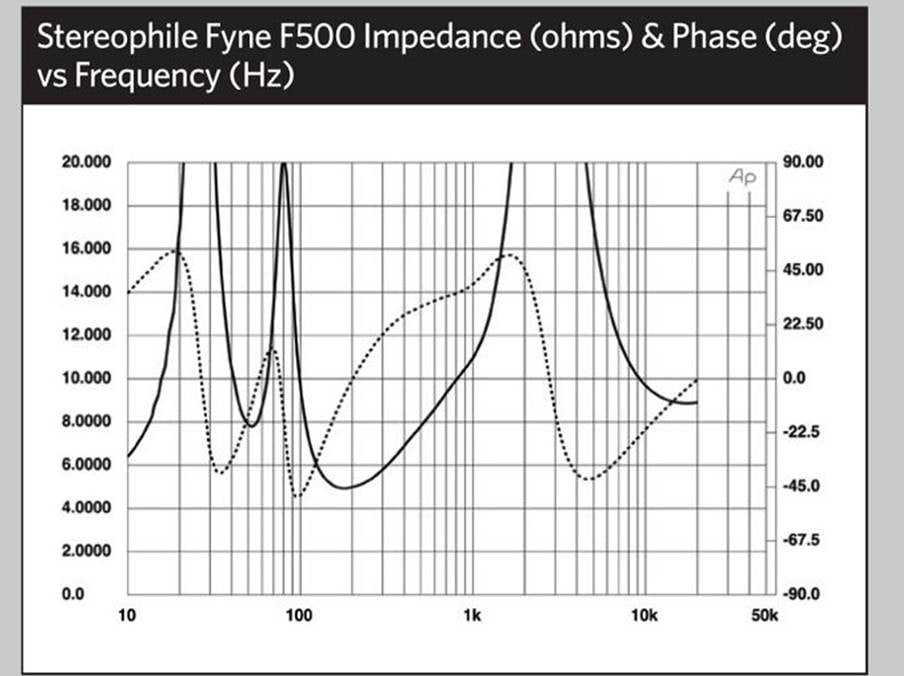
Fig.1 Fyne Audio F500SP, electrical impedance (solid) and phase (dashed) (2 ohms/vertical div.).
The saddle centered on 53Hz in the impedance-magnitude trace suggests that this is the tuning frequency of the downward-firing port that reflex-loads the woofer. The red trace in fig.3 shows the port’s nearfield output measured at 1 EPDR is the resistive load that gives rise to the same peak dissipation in an amplifier’s output devices as the loudspeaker. See “Audio Power Amplifiers for Loudspeaker Loads,” JAES, VoL42 No.9, September 1994, and stereophile.com/reference/707heavy/index.html.
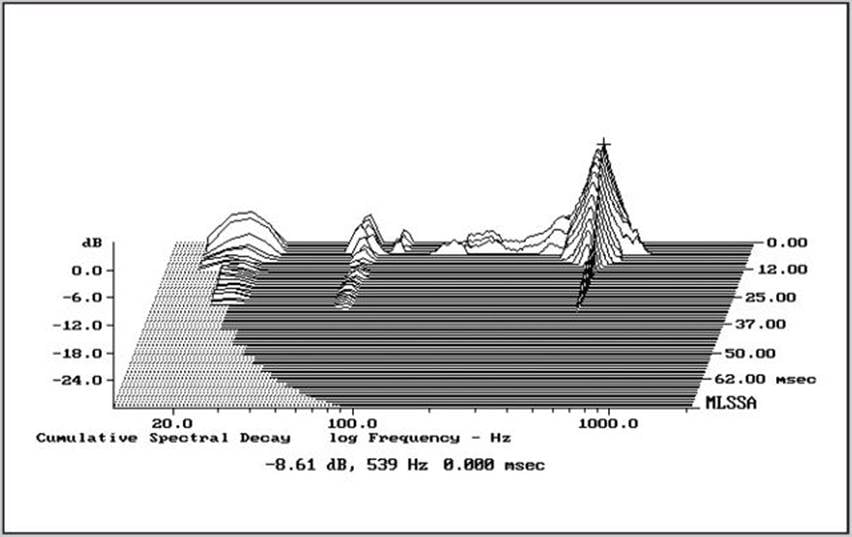
Fig.2 Fyne Audio F500SP, cumulative spectral-decay plot calculated from output of accelerometer fastened to center of sidewall (MLS driving voltage to speaker, 7.55V; measurement bandwidth, 2kHz).
the opening at the speaker’s base. The response broadly peaks slightly higher in frequency than the port tuning frequency, and the upper-frequency rolloff is clean, though a low-level peak can be seen between 600Hz and 700Hz. The blue trace below 350Hz shows the nearfield response of the woofer. The woofer’s farfield output peaks slightly before crossing over to the tweeter (fig.3, green trace) at 1.5kHz. The tweeter’s fundamental dome response lies
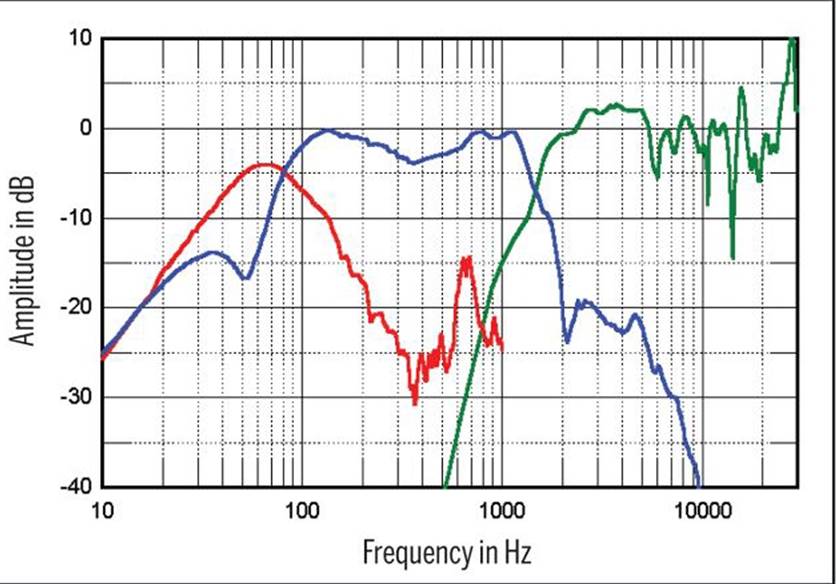
Fig.3 Fyne Audio F500SP, acoustic crossover on tweeter axis at 50″, corrected for microphone response, with the nearfield response of the port (red) and the woofer (blue), respectively plotted below 1kHz and 350Hz.
well above the audioband, at 29kHz, but the drive unit’s output above 5kHz is disturbed by narrow peaks and dips. I suspect that this behavior is due to reflections of the coaxially mounted, horn-loaded tweeter from the circumference of the woofer cone. The tweeter appears to be balanced a couple of dB higher in level than the woofer, which, in combination with the latter’s slightly shelved-down output in the midrange, could make the F500SP sound a little thin.
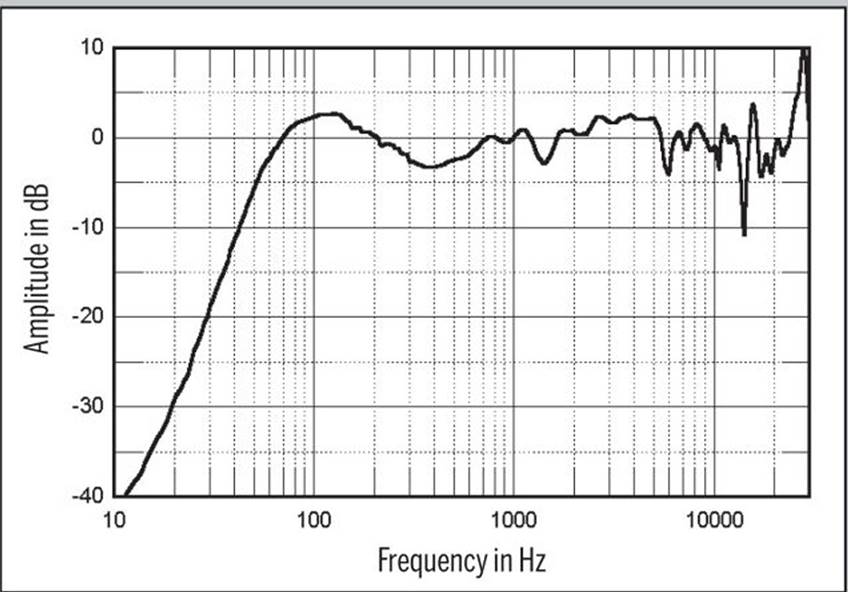
Fig.4 Fyne Audio F500SP, anechoic response on tweeter axis at 50″, averaged across 30° horizontal window and corrected for microphone response, with the complex sum of the nearfield responses plotted below 300Hz.
Fig.4 shows the F500SP’s farfield response averaged across a 30° horizontal window centered on the tweeter axis. The boost in the upper bass is due to the nearfield measurement technique, and the response has a slightly rising trend from the middle of the midrange through to the mid-treble.
The Fyne’s horizontal dispersion is shown in fig.5. (The traces are normalized to the response on the tweeter axis, which thus appears as a straight line.) The loudspeaker becomes more directional as the frequency increases above the midrange, which will tend to compensate for the tweeter’s +2dB balance, but the off-axis behavior is complex in the region where the on-axis response has narrow peaks and dips. Experimenting with toe-in may well optimize the F500SP’s top-octave balance. The Fyne Audio’s vertical dispersion, again normalized to the response on the tweeter axis, is shown in fig.6. As expected from the symmetrical drive-unit array, it is similar to the speaker’s behavior in the horizontal plane.

Fig.5 Fyne Audio F500SP, lateral response family at 50″, normalized to response on tweeter axis, from back to front: differences in response 90°-5° off axis, reference response, differences in response 5°-90° off axis.
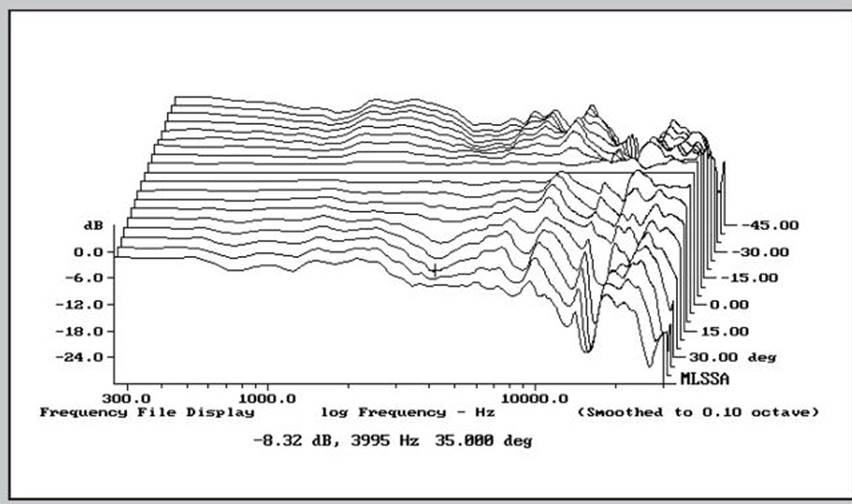
Fig.6 Fyne Audio F500SP, vertical response family at 50″, normalized to response on tweeter axis, from back to front: differences in response 45°-5° above axis, reference response, differences in response 5°-45° below axis.
Turning to the time domain, the F500SP’s step response on the tweeter axis (fig.7) indicates that the woofer’s output arrives first at the microphone and that this drive unit is connected in positive acoustic polarity. The tweeter is connected in negative polarity and, as expected from its coaxial mounting at the rear of the woofer’s pole piece, its output arrives after the woofer’s. The F500SP’s cumulative spectral-decay plot (fig.8) is generally clean, though with three narrow-band ridges of resonant decay present in the mid-to-high treble.

Fig.7 Fyne Audio F500SP, step response on tweeter axis at 50″ (5ms time window, 30kHz bandwidth).
The Fyne Audio F500SP’s measured performance is dominated by its use of a coaxially mounted tweeter. Careful experimentation in positioning and toe-in should Optimize its balance. John Atkinson

Fig.8 Fyne Audio F500SP, cumulative spectral-decay plot on tweeter axis at 50″ (0.15ms risetime).
ASSOCIATED EQUIPMENT
Analog sources Kuzma Stabi R turntable/4Point tonearm, EMT TSD 15 N Super Fineline moving coil phono cartridge. Preamplification Tavish Audio Design Adagio phono. Integrated amplifiers Ayre EX-8 2.0, Heed Audio Elixir, Parasound Hint 6 Halo, Schiit Audio Ragnarok 2.
Power amplifiers LKV Research Veros PWR+. Loudspeakers GoldenEar BRX, Polk Audio Legend L100. Cables Interconnect: Two-meter Triode Wire Labs Spirit II. Speaker: 8′ pair Auditorium 23. AC: Triode Wire Labs Obsession NCF, manufacturers’ own.
Accessories One pair 24″ Sanus speaker stands; Pro-Ject VC-S2 ALU Record Cleaning Machine; Audiodesksysteme Vinyl Cleaner Pro LP Cleaning System; Hunt Mark 6 Carbon Fiber Record Cleaning Brush; RTOM Moongel Drum Damper Pads (stylus cleaner); Kuzma Platis 65 isolation platform; IsoTek EVO3 Aquarius line conditioner; (2) Salamander five-tier rack; IKEA Aptitlig bamboo chopping boards (under turntable, preamp, power amps); mahogany blocks (2″ x 2″ x 0.5″) under boards; 3″ studio-treatment damping (ceiling, walls).—Ken Micaiief

